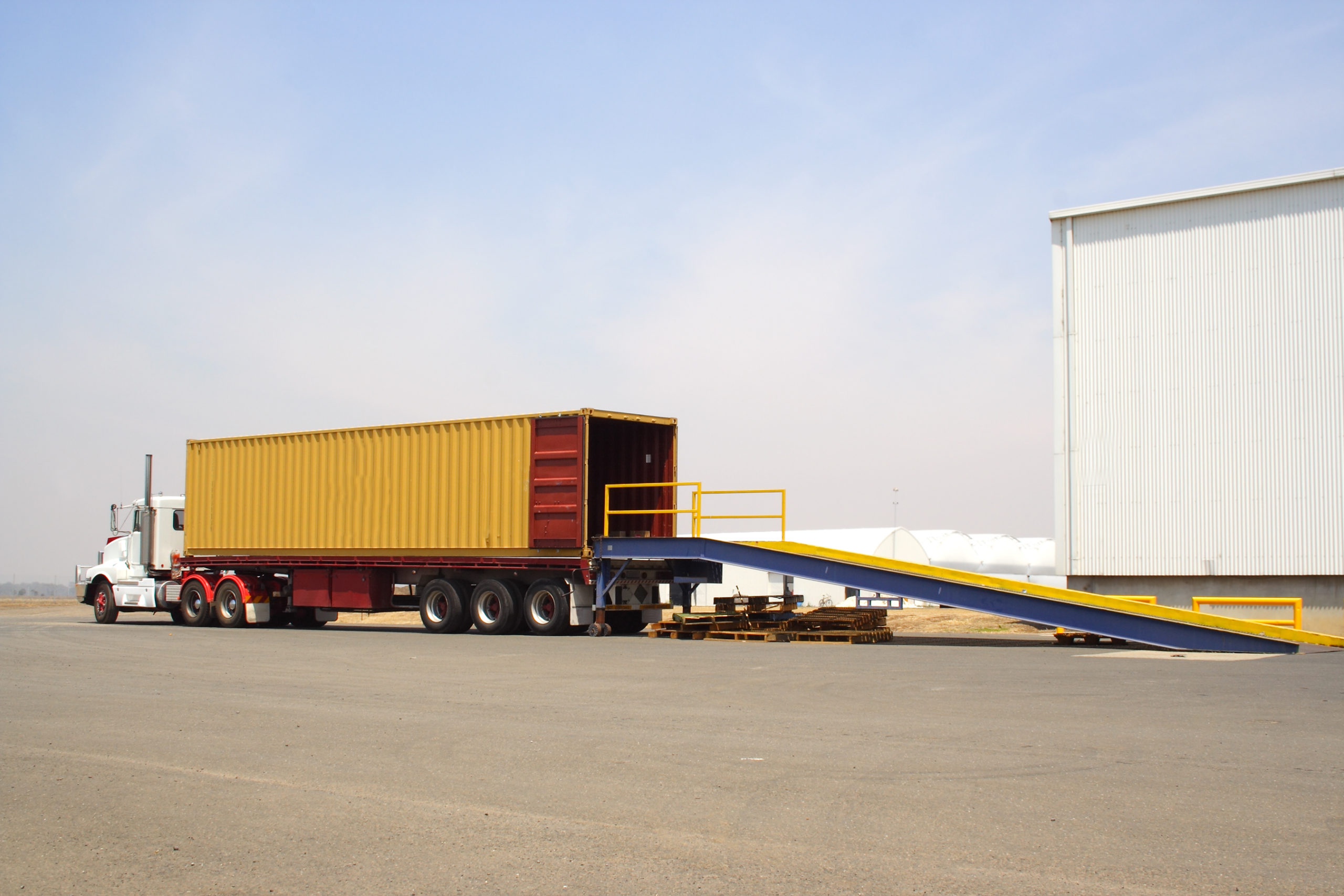Employees can use all different types of equipment to unload product from dry vans or box trucks. Some employers equip their trucks with lift gates, while others use a ramp and a cart to unload product. All methods pose particular safety risks, so safety awareness and training for employees is essential.
Fall Hazards
Most dry van trailers sit at a height at or above 4 feet. According to the Occupational Health and Safety Administration (OSHA), this is the height at which employers are required to comply with fall protection standards. Although fall protection isn’t required in a trailer, it is necessary to understand that an employee could be seriously injured if they were to fall off the top of a ramp at that height.
To avoid falls while unloading, employees should be instructed to ensure:
- They attach and secure the ramp to the proper place after setting it up and prior to using it.
- When moving product out of the truck and down the ramp, they slow down to position the cart in line with the ramp guides before they begin to move down the ramp.
- They never load the cart over capacity or move at a pace that makes it difficult for the cart to be controlled.
- They always check the manufacturer’s maximum load capacity rating to verify the weight the cart can safely hold.
- When stacking product, they stack just enough on the cart so they can still see over the product. Over stacking is a method employees use to reduce the number of trips made, but this can cause serious safety issues. For example, an employee can fall and be hit with product or injure their backs.
- They have the cart in front of them when going down the ramp. This allows for better control and reduces the risk of being struck by the cart and product if a trip or fall were to occur.
Weather also plays a role in fall hazards on ramps. Employers must ensure the ramps being used have traction on them to help with navigating the ramp in inclement weather. This will reduce the risk of slips, trips and falls if the ramp is wet, or if it has snow or ice on it.
What Employers Can Do
Train employees on how to use the ramps and carts that are provided to them for their job tasks. Allow employees to give you feedback on what is working and what needs improvement. Working together to understand the needs of your employees can prevent injuries and reduce product damage.








